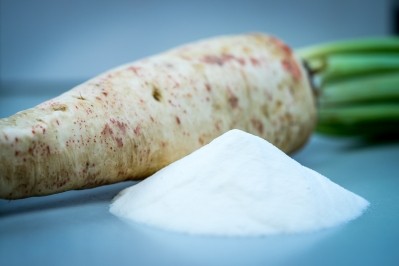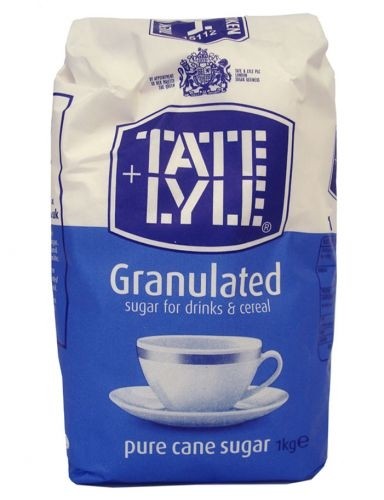From free sugar to sugar-free

Following the publication of the Scientific Advisory Commission on Nutrition’s (SACN’s) report on carbohydrates and health in July, the UK government is expected to revise guidelines for dietary fibre and sugar consumption.
The report recommends that 5% of daily energy should come from free sugars, compared with 10% previously, and fibre intake should be increased to 30g a day for adults.
The goal is to reduce obesity, tooth decay and lifestyle diseases such as type 2 diabetes and heart disease.
But implementing the recommendations is the hard part. As Jenny Arthur, director of nutrition & innovation with Leatherhead Food Research (LFR), puts it: “The report presents several challenges. Firstly, from a public health perspective the guidelines must be clear and understandable for consumers such that they recognise what action they can take.
“This means that definitions and terminology will need to be understood and that on-pack communication should be aligned. Secondly, the recommendations present the food industry with further reformulation challenges alongside innovation and new product opportunities.”
After years of reformulation by its members, the Food and Drink Federation (FDF) seems keen for at least part of the responsibility for execution to be apportioned to other stakeholders in the health debate.
“To meet the stretching dietary goals that SACN recommends will mean changes to the way people eat … We hope SACN’s key recommendations will be translated into meaningful and practical diet and lifestyle messages, which are consistently used by everyone in the health debate,” says Ian Wright, director general of the FDF.
The trade association, which represents the interests of the UK food industry, points out that the sector has already made great strides in reformulation: calories in foods and drinks have been gradually lowered through recipe reformulations, including sugar reduction, and changes to portion sizes.
The problem with further reformulation, according to the FDF, is that there are only so many changes to a favourite food or drink a consumer will accept.
“Consumer demand for healthier and great-tasting products has to be at the heart of any work to review existing recipes and create new products,” adds a spokeswoman.
Sweetener and starch producer Ingredion believes the consumer demand is there, and that it is down to manufacturers to respond.
More health conscious (Return to top)
“Our market research shows that consumers are far more health conscious and savvy than they ever have been. Therefore, it is the manufacturers or brands that respond to this by adapting their recipes to create healthier reduced sugar, high-fibre foods that don’t compromise taste, texture, quality or visual appeal, that will succeed,” says Julie Scott, senior manager, regulatory affairs, with Ingredion UK.
The SACN report was welcomed by Ingredion, not least because it extended the definition of ‘dietary fibre’ to include non-starch polysaccharides as well as non-digestible oligosaccharides, resistant starch and polydextrose.
“There is now evidence to demonstrate similar beneficial physiological effects are achieved with added functional fibres as those demonstrated for naturally integrated dietary fibre components of food. A key benefit of this is that we are able to develop ingredients that help make processed foods healthier,” adds Scott.
Ingredion calls this approach ‘nutrition plus’ and says that, for example, a drinks manufacturer could add one of its newly launched ingredients, Bio Ligo 5700 Gos, to add fibre to a fruit smoothie without impacting the overall taste. Or a baker could add Ingredion’s HiMaize resistant fibre to white bread to boost fibre content but with no negative effect on texture.
Beneo is another ingredients firm for whom the SACN report could be a boon, as its non-digestible carbohydrate ingredients – chicory root derived inulin and oligofructose – are now considered dietary fibres.
Anke Sentko, Beneo’s vice president of regulatory affairs and nutrition, explains that non-digestible carbohydrates can assist with weight management as they provide only half the calories of available carbohydrates. Yet, their role goes beyond calorie counting, she says.
“Scientific research confirms their beneficial effect on hunger/satiety hormones as well as on energy intake over the long term. Weight loss data is available to demonstrate that chicory root fibres help consumers to eat less, naturally,” she says.
Chicory root fibres also align with the objectives outlined in the SACN report, as they enable manufacturers to reduce sugar and increase fibre.
“Having a mild sweet taste and being soluble, they can be applied to various applications without changing the end product’s taste or texture,” Sentko explains.
Ingredients like these have been around for some time and time will tell whether the SACN report will provide a new impetus for their inclusion in formulations.
Laura-Daisy Jones, global food science analyst with Mintel, says she has already observed an increase in the use of non-digestible carbohydrates such as polydextrose, inulin and oligosaccharides, which fulfil the dual role of dietary fibre enrichment and sugar replacement.
“They are starting to appear more in products, particularly in baked goods,” she notes.
Jones predicts that the next few years will see a wave of ‘stealth sugar’ reduction by the industry, saying: “We’ve already seen this approach with salt and the successful products have been those that have reduced levels gradually. I think that is what we will see with sugar reduction.”
Stealthy sugar (Return to top)
She lists condiments, table sauces, soups and ready meals as the candidates most ripe for this.
To achieve further sugar reductions, manufacturers may have to become more adventurous. Whilst sweeteners such as sucralose will no doubt have a role to play, Leatherhead’s Arthur believes this sweetener’s dominance is currently being challenged by consumer demand for more natural ingredients in their food.
“Steviol glycosides – or stevia – are now making inroads into the global food and drinks industry, and the sector is developing with the emergence of more varieties,” she says.
Mintel’s Jones speculates that other natural sweeteners which are waiting in the wings, such as monk fruit extract, may come to the fore.
Monk fruit extract is produced by Tate & Lyle under the Purefruit brand. Although it’s on the shelf in soft drinks in the US, it is not yet approved for use in the EU.
Then there are ‘rare sugars’, says Jones, such as allulose, allose and melezitose, many of which have lower calories than traditional sugars.
The issue is that they are difficult to extract from nature in volumes that would make them commercially viable for suppliers.
Tate & Lyle, however, has found a way of mass producing allulose, which is present in very small quantities in figs, raisins and jackfruit, as well as in foods like caramel sauce, maple syrup and brown sugar. Its production method involves taking the carbohydrate from corn and using enzymes to produce the sugar, which it has branded Dolcia Prima.
Even more niche, but, in Jones’s view, starting to play a more important role, are sweet proteins, which mainly derive from tropical fruit. So far six proteins thaumatin, monellin, mabinlin, brazzein, egg lysozyme and neoculin have been identified as sweet-tasting proteins.
In addition to the potential offered by these ‘new’ sweeteners, LFR suggests that there could be mileage in changing the size, shape and density of sugar crystals.
“Research at Leatherhead has shown that altering the size of sugar affects the flavour and texture of sugar-based products, so this needs to be considered when altering the size of the sugar,” explains Arthur.
She continues: “Emerging technologies that will produce hollow sugar crystals or thin coatings of sugar around an inert low calorie ingredient such as calcium carbonate could deliver sweet taste with lower overall sugar levels.”















